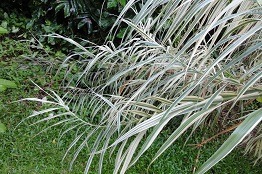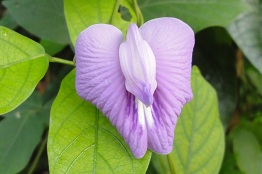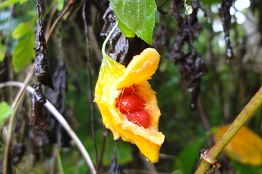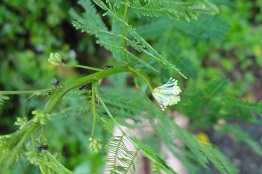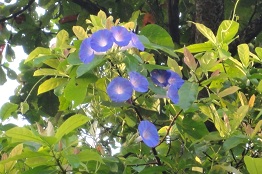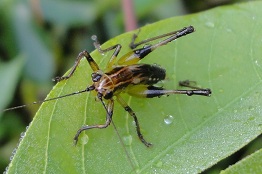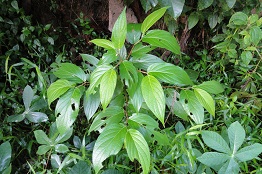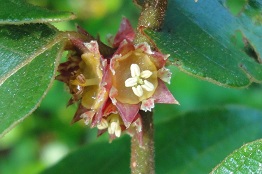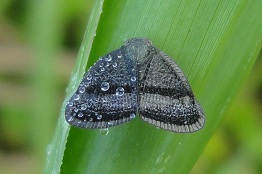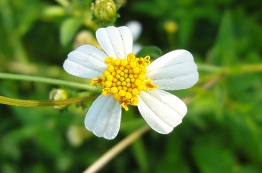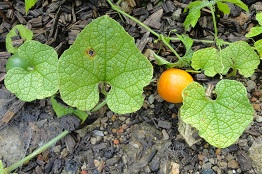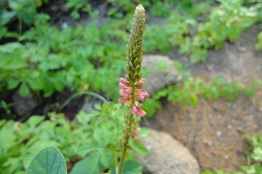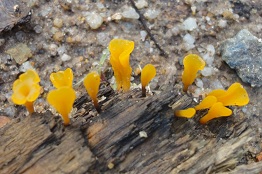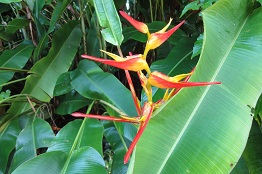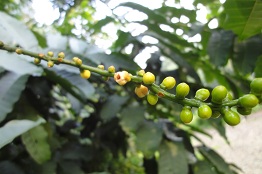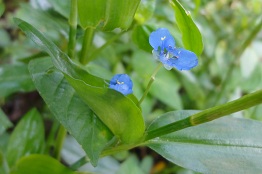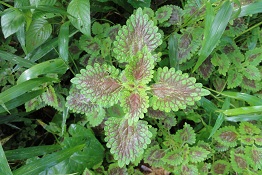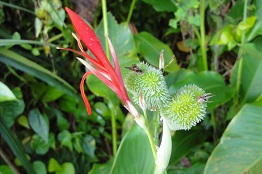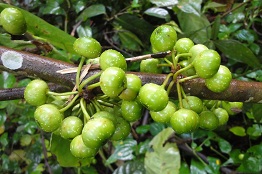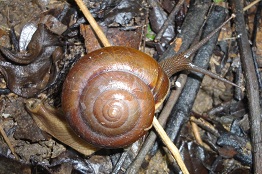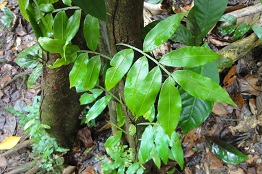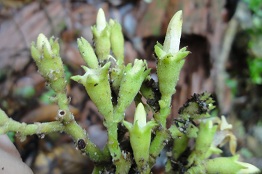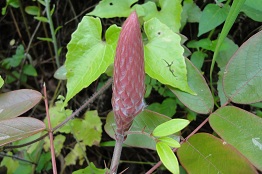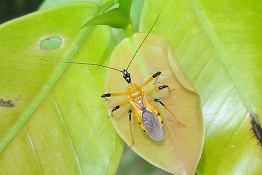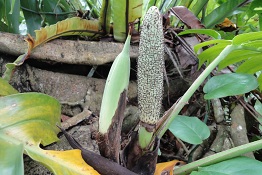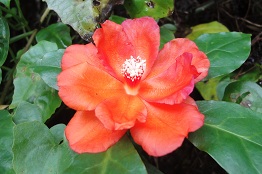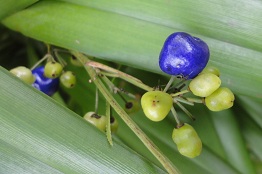Highlight:
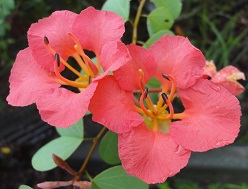 It has been more than a year since the last time I came by here. The
whole place was still wet from the heavy rain in the early morning. The damp surrounding had probably helped in the reduction of human
traffic. The first sign of a great start was the sighting of the Red Orchid Tree
(Bauhinia galpinii). Of course, this plant is not part of the nature community in the area but someone's plant that had extended
its branches out to the man road.
It has been more than a year since the last time I came by here. The
whole place was still wet from the heavy rain in the early morning. The damp surrounding had probably helped in the reduction of human
traffic. The first sign of a great start was the sighting of the Red Orchid Tree
(Bauhinia galpinii). Of course, this plant is not part of the nature community in the area but someone's plant that had extended
its branches out to the man road.
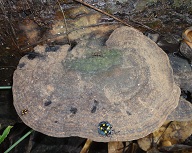
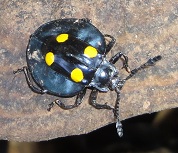
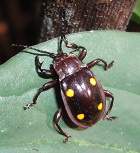 The first creature that got me excited was these fungus beetles
found on some large bracket fungi that grew on a decaying log. There were two different types of these Handsome Fungus Beetles; one was
dark brown while the other was black.
[Update: Eumorphus marginatus and
Eumorphus dilatatus turritus.]
The first creature that got me excited was these fungus beetles
found on some large bracket fungi that grew on a decaying log. There were two different types of these Handsome Fungus Beetles; one was
dark brown while the other was black.
[Update: Eumorphus marginatus and
Eumorphus dilatatus turritus.]
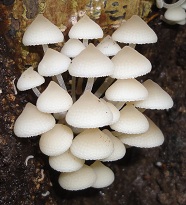
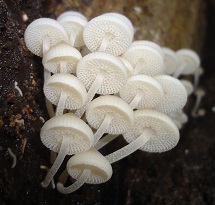

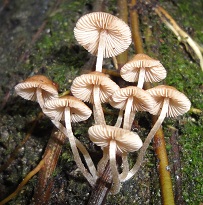 Plenty of mushrooms can be seen due mainly to the damp surrounding which was conducive for the appearance of these fruiting bodies. The
underside of the mushrooms can be quite interesting with very ordered patterns, though it was not easy to view them with the naked eyes.
Plenty of mushrooms can be seen due mainly to the damp surrounding which was conducive for the appearance of these fruiting bodies. The
underside of the mushrooms can be quite interesting with very ordered patterns, though it was not easy to view them with the naked eyes.
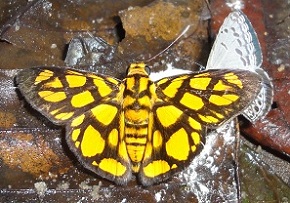 The most exciting moment was the sighting of a brightly coloured
skipper, Hieroglyphic Flat (Oriens gola pseudolus).
Best of all, it had settled down on the forest floor and was happily sucking a white patch of materials. It did not pay too much attention
to my approach, even when my camera was just a few centimetres away from it. It had a companion, likely to be a
Common Hedge Blue (Acytolepis puspa lambi). I did not
capture the picture of the small butterfly as my full attention was on the yellow skipper.
The most exciting moment was the sighting of a brightly coloured
skipper, Hieroglyphic Flat (Oriens gola pseudolus).
Best of all, it had settled down on the forest floor and was happily sucking a white patch of materials. It did not pay too much attention
to my approach, even when my camera was just a few centimetres away from it. It had a companion, likely to be a
Common Hedge Blue (Acytolepis puspa lambi). I did not
capture the picture of the small butterfly as my full attention was on the yellow skipper.
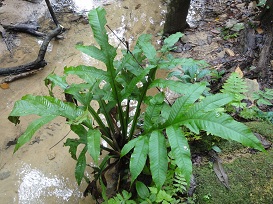
 An unusual fern
(Tectaria semipinnata) was seen by the side of a stream. It was quite different from
those that I had seen so far but did not realize that it was a rare fern until I did the search in the Internet.
An unusual fern
(Tectaria semipinnata) was seen by the side of a stream. It was quite different from
those that I had seen so far but did not realize that it was a rare fern until I did the search in the Internet.
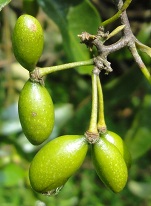
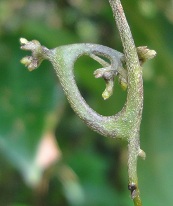 Besides the fern, another new plant found was
Artabotrys suaveolens. It is a woody climber with the fruits usually located high
up on trees where the climber hangs on to. With the host tree fell, likely due to the overnight storm, the fruits were presented just in
front of me. The fruits' stalk was attached to hook-liked structure. These hooks are likely used by the climber to assist its climb skyward.
Besides the fern, another new plant found was
Artabotrys suaveolens. It is a woody climber with the fruits usually located high
up on trees where the climber hangs on to. With the host tree fell, likely due to the overnight storm, the fruits were presented just in
front of me. The fruits' stalk was attached to hook-liked structure. These hooks are likely used by the climber to assist its climb skyward.
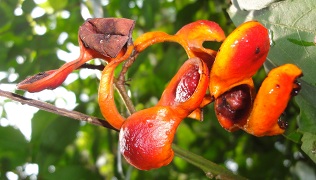
 The curvy orange seed pod was from the
Monkey-pod (Archidendron clypearia) tree.
The curvy orange seed pod was from the
Monkey-pod (Archidendron clypearia) tree.

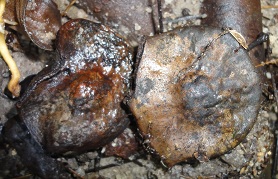 A number of these woody and hard seed pods were seen on the
forest floor. They should be from another Archidendron species (maybe A. jiringa). A few large seeds were seen nearby which
I suspect were the seeds of this plant.
A number of these woody and hard seed pods were seen on the
forest floor. They should be from another Archidendron species (maybe A. jiringa). A few large seeds were seen nearby which
I suspect were the seeds of this plant.
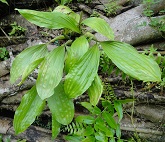
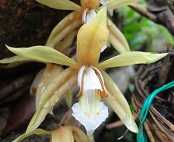 I will end with this unknown cultivated orchid found on a pile of
logs [Update: Coelogyne rochussenii]. This should the best field trip of the year
judging from the number of interesting plants, mushrooms and creatures seen.
I will end with this unknown cultivated orchid found on a pile of
logs [Update: Coelogyne rochussenii]. This should the best field trip of the year
judging from the number of interesting plants, mushrooms and creatures seen.
Photo Gallery:
Below are selected photos from this trip arranged according to the sequence that they were taken. There is a text link under the photo that will direct you to more photos of the same species if they are available in my website.
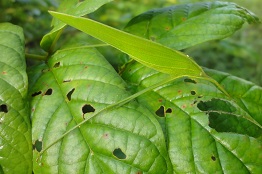
DSC03361
Euconocephalus sp.
(Katydid)
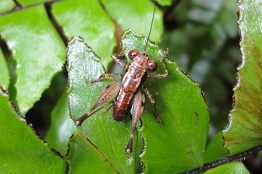
DSC03460
Lipotactes sp.
(Cricket)
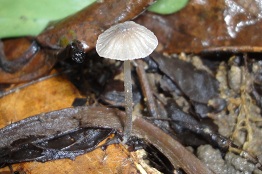
DSC03515
Mushroom
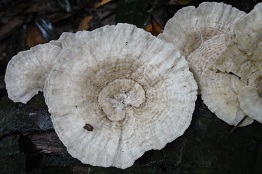
DSC03536
Mushroom
(Bracket Fungus)
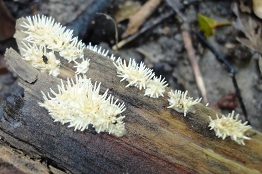
DSC03546
Radulodon copelandii
(Crust Fungus)
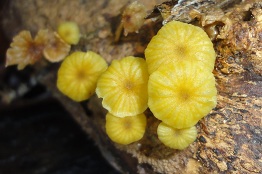
DSC03556
Mushroom

DSC03626
Microporus xanthopus
(Yellow-footed Polypore)
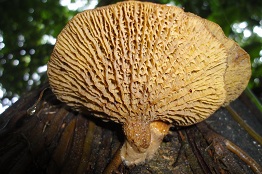
DSC03704
Underside of a Bracket Fungus
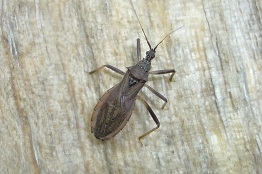
DSC03734
Assassin Bug
(Family: Reduviidae)
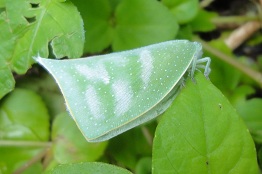
DSC03743
Planthopper
(Family: Fulgoroidea)
Statistics:
